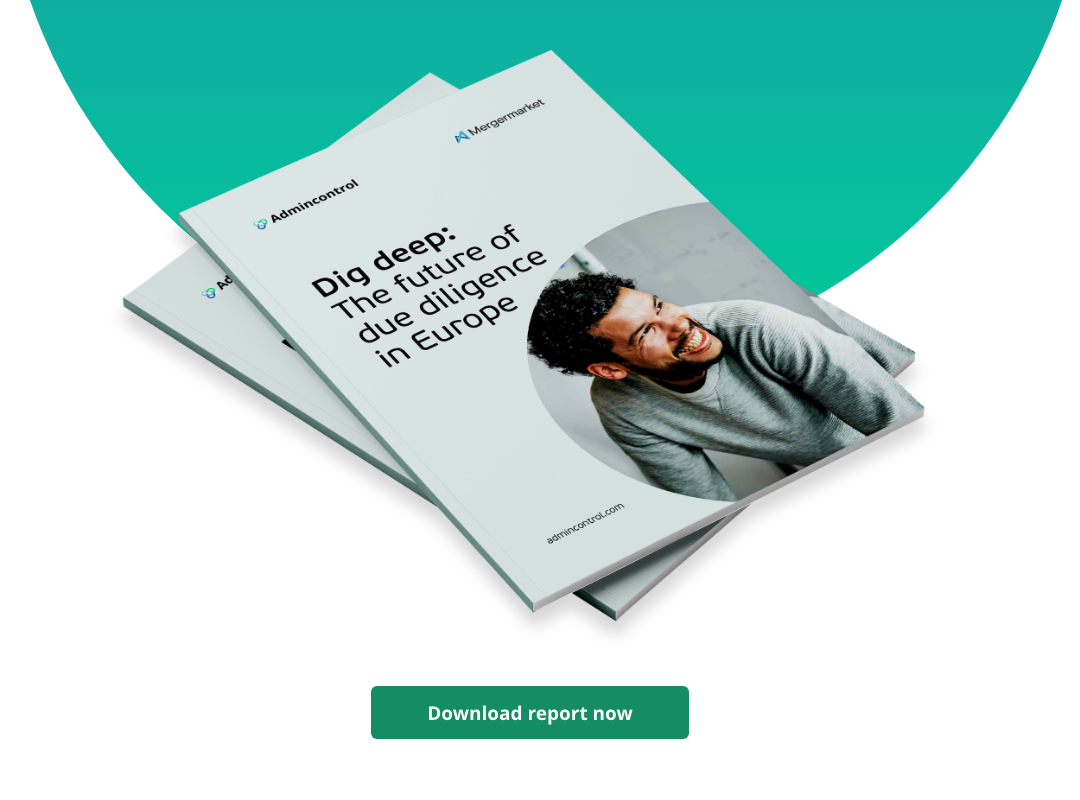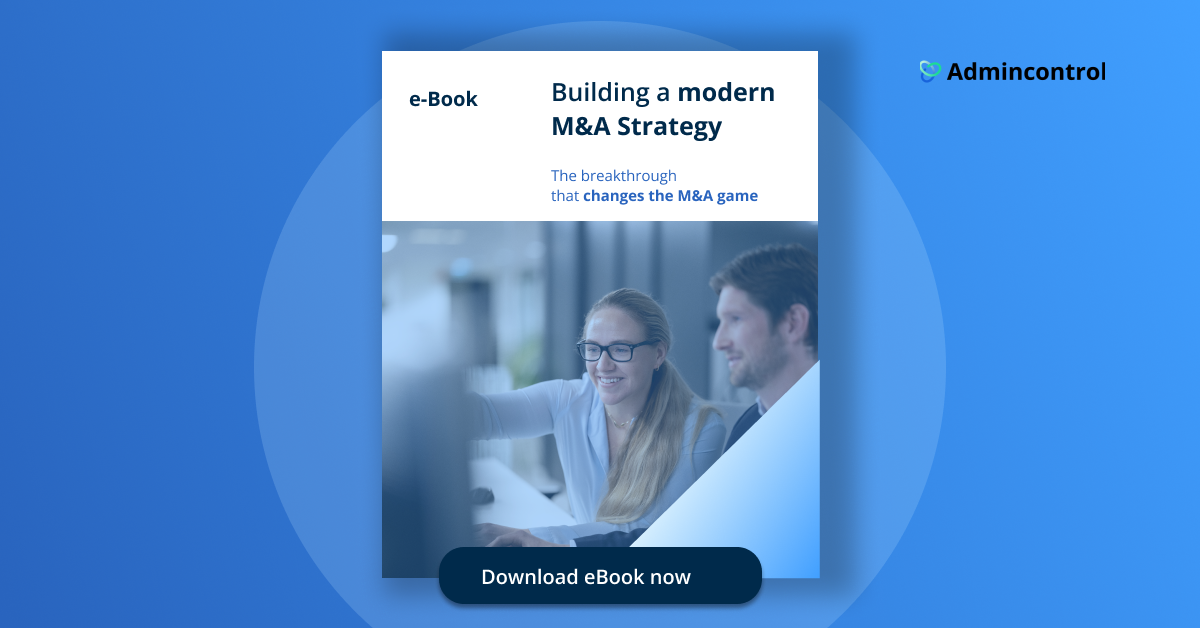Since the early 2000s, technological innovation has accelerated business growth and evolution. From the arrival of 4G and 5G mobile networks to electric vehicles, big data and cloud computing, technology has been at the centre of huge social and economic change.
For dealmakers, harnessing the power of technology for more effective merger and acquisition (M&A) execution is game-changing too. Understanding the specific M&A tools that will create the most benefits for deal staging and execution for your organisation and team is key, however.
In this blog, we look at some of the technologies with the power to transform deal execution now and in the future.
How deal execution is changing
Globally, 500,000 M&As have been completed over the last decade1. Of course, over that period, there have been natural peaks and troughs as markets and businesses respond to macroeconomic conditions. In recent times, for example, 2021 was one of the biggest on record for deal value but after a strong start, it was a more mixed picture for 2022.
One thing that has remained constant, however, is the need for technology to keep pace with the ever-changing deal landscape. Some of the hot topics for today’s dealmakers are:
- Cross-border transactions with deal teams together across territories
- Internal hybrid working teams creating new communication and collaboration challenges
- Regulatory changes resulting in greater deal scrutiny and compliance requirements
- Increasing cybersecurity threats
M&A technology has a fundamental role to play in helping to respond to these issues to ensure deal execution is efficient and effective. Ultimately, realising deal value is the goal and while there’s a complex interplay of factors that determine success, the right M&A tools have the power to transform the process by accelerating outcomes and reducing costs.
Ultimately, realising deal value is the goal and while there’s a complex interplay of factors that determine success, the right M&A tools have the power to transform the process by accelerating outcomes and reducing costs
Essential technology in M&A
On the surface, dealmakers can use software that is used on a daily basis in every business, from the sales and marketing department to human resources and the C-suite. For example, Excel spreadsheets can be used by both parties to exchange information during the Q&A stage, and contracts and other documents can be annotated manually and sent for review by email.
While deals can be run this way, these tools are not designed for the rigours of a deal lifecycle or tailored to the complexities of negotiating and closing an M&A. Perhaps more critically, they mean data security is at considerable risk, document review is more time consuming and the potential for leaks of sensitive business information is increased.
With a host of technology solutions designed specifically for the needs of M&A transactions, including artificial intelligence (AI), organisations have sophisticated alternatives designed to optimise workflows, free up resources and save costs too.
Virtual data rooms - the foundation of a deal lifecycle
Virtual data rooms (VDR) have been around for around twenty years now but as you would expect over that time, they have evolved in response to the demands of the modern M&A era.
The simple definition of a VDR is a secure online repository for confidential documentation. It is a cloud-based environment that uses enhanced security technology to ensure sensitive information is only accessible to authorised personnel.
Since VDRs utilise enhanced cloud-based software, it means workflows associated with a deal can be digitised providing any time anywhere access to documentation, secure messaging and task management features. As access is not limited by physical location, collaboration amongst dealmakers is simpler and quicker.
- Q&A modules create a secure structure for communication between the two sides of a transaction without leaving the safety of the VDR platform
- Secure messaging helps internal teams to collaborate and communicate more efficiently, removing the need to use less secure email programmes
- Folder structures for documentation can be set up automatically with best-practice templates and indexing tools to get the data room up and running quickly
- Access to sensitive information is controlled through managed user permissions
Typically, VDRs are used during the due diligence phase of a transaction, but increasingly the benefits they offer mean they are being used for the entire M&A lifecycle and beyond. In particular, a VDR offers many benefits in the post-deal integration phase.
- It continues to be a centralised hub for information and integration planning support the execution of the agreed deal
- The documentation used during deal negotiations can be retained inside the safety of the VDR for future reference but is also exportable if needed
- Compliance requirements can be met more simply with a comprehensive audit trail and the ability to easily surface processes or findings from hundreds of historical tasks
Read more about the benefits of VDRs in our blog
The simple definition of a VDR is a secure online repository for confidential documentation. It is a cloud-based environment that uses enhanced security technology to ensure sensitive information is only accessible to authorised personnel
Artificial intelligence - accelerate document review
New AI technology has many benefits to offer dealmakers but it's the core ability to speed up complex and repetitive tasks that would otherwise require human input and judgment that keeps a deal progressing.
More specifically, AI tools balance the time and resources available with the requirement to uncover factors that might prove a deal-breaker, or, those that need team discussion and negotiation.
Typically, legal advisors must read every piece of documentation individually searching for these issues and more. Manually trawling through supplier and employment contracts, service level agreements (SLAs) or pricing agreements looking for clauses and issues that need discussion will take up substantial time. This ties up senior-level advisors in repetitive tasks resulting in expensive professional fees.
Utilising AI tools within a VDR releases legal advisors from these mundane tasks and allows them to focus their attention on the higher-value priorities that need their considerable skill and experience.
AI technology will:
- Automate the rapid identification of anomalies
- Highlight clauses or information based on a pre-determined logic
- Find compliance-based issues based on standardised models
In summary, given many deals live or die by the outcome of the due diligence phase, AI technology has the power to facilitate and accelerate vital tasks that in the longer term can help transform deal execution. It offers increased control over variables including human error and variance, improves transparency and saves on resources and costs.
Advances in cognitive technology—such as artificial intelligence (AI) software—now enable the rapid identification and extraction of key provisions through the review of thousands of contracts and other documents within a few weeks’ time. 2
Read more on how AI can speed up due diligence in our blog.
The increasing risk of cyberattacks
While technological advancement has undoubtedly simplified onerous tasks associated with M&A transactions, it is important to recognise the increasing threat of cyberattacks and the impact on companies that are underprepared.
The statistics can be an alarming read:
- Globally, hackers attack every 3 seconds3 and a company is targeted by a ransomware attack every 11 seconds4
- 94% of malware is sent via email and 48% of malicious email attachments are Microsoft Office files
- Between 2019 and 2020, Scandinavia saw the largest increase in data breach costs rising by 12%4
With cybercrime predicted to cost $10.5 trillion per year by 20254, the risk of data breaches and information loss is a significant risk for every business around the world. However, the risks are higher still for dealmakers.
With cybercriminals taking advantage of commonly used email programmes and attachments, it is simply too risky for dealmakers to communicate and share attachments via unencrypted email. The additional layers of security built into M&A technology are an essential tool in protecting business-critical data and ultimately help ensure that the execution of a deal stays on course.
Read our blog, cyber due diligence - 5 features to look for in M&A technology
Between 2019 and 2020, Scandinavia saw the largest increase in data breach costs
Summary
The M&A pipeline is a complex and lengthy process of many tasks that result in a strategically vital decision being made. Whether a deal closes or not, just getting to the end of the negotiation stage with the insight needed to make the decision can be difficult enough. Add into the mix the need for the highest security measures, multiple stakeholders and the risk of deal fatigue, and executing a successful deal is always challenging.
M&A technology including VDRs and new AI technology are the workhorses of a deal team on both sides of the transaction. They free up resources and time thereby reducing costs, they reduce friction in processes that cause delays and help dealmakers remain agile and responsive.
What the next 5-10 years of technological investment and innovation will bring is difficult to predict with accuracy, but we can be sure that advanced connectivity, an increase in AI usage and its application together with changing macroeconomic conditions around the world will continue to shape the M&A deals of tomorrow.
Sources





